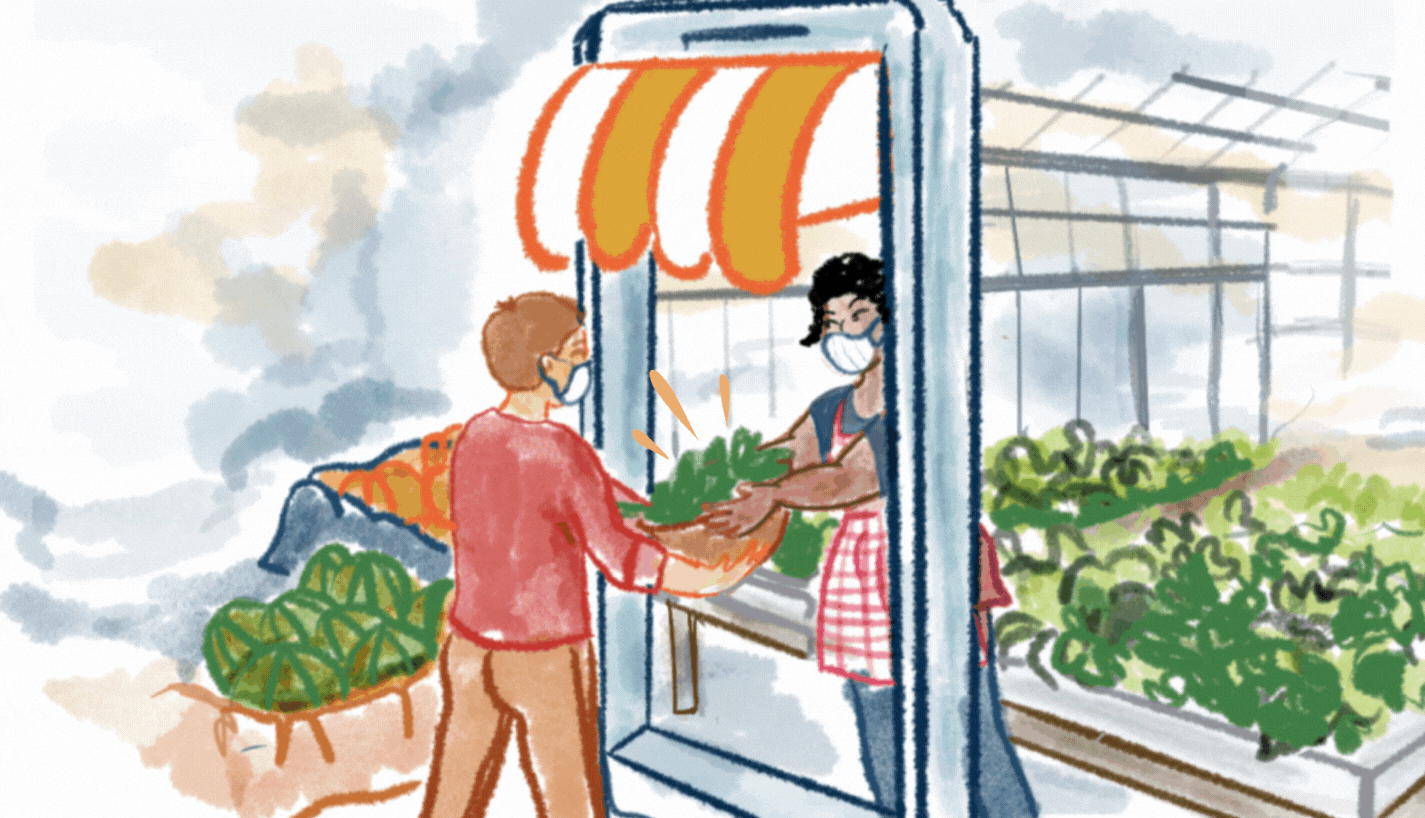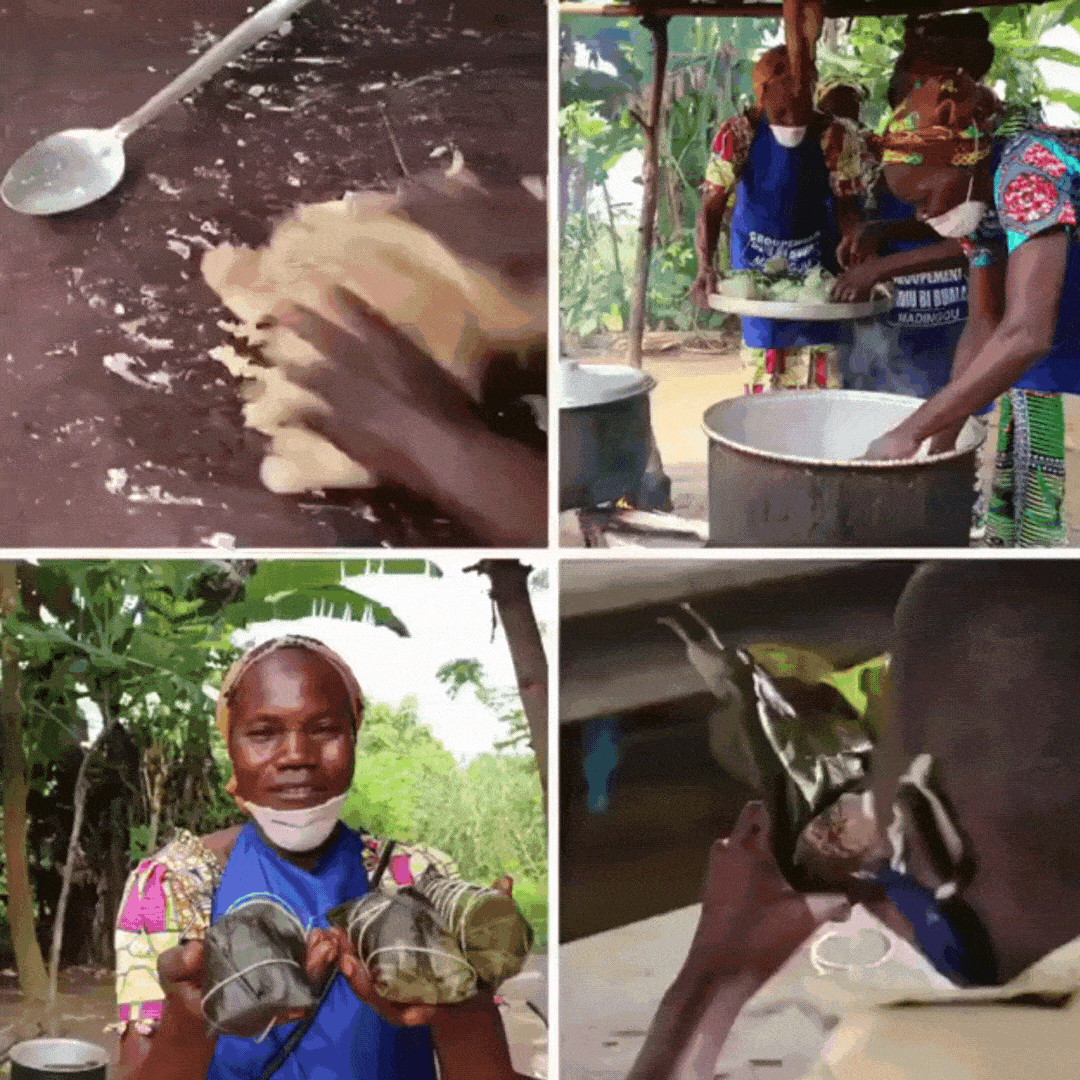How regional innovation can transform the future of food systems
5 reasons why local and regional innovations are crucial for shaping the future of food systems
By Sanjna Sudan and Gulia Rakhimova

The World Food Programme (WFP) believes there is enough knowledge and expertise regionally and globally that can help us transform our food systems, to disrupt hunger at its very root.
But too many of the world’s food systems are not functioning properly, with nearly one-tenth of the global population — up to 828 million people — going to bed on an empty stomach each night. These people who face the end result of a flawed food system feel the consequences most acutely and are best positioned to inform solutions.
Supporting locally-led solutions has been at the heart of our work at the WFP Innovation Accelerator. We leverage the skills and talent of innovators around the world to find, pilot and scale novel solutions to hunger and tap into innovation ecosystems in some of the world’s strategic regions through WFP’s innovation hubs. The WFP Innovation Challenge 2022, for example, called for startups and innovators to rethink the global food system and brought together eight innovation teams at the 43rd Innovation Bootcamp and Pitch Event.
Here are five reasons why we believe supporting regional innovation and leveraging local strengths are the way forward to building food systems that cater to everyone:
1. Rooted in context
We have seen many local innovations emerge in response to a compelling need within a specific context. This compelling need drives their initiators to put aside their daily routine to develop a solution, building on their lived experience which gives them the required understanding and knowledge of the local challenge.
For example, Chido Govera, a founder of the Mushroom Integrated Food Production System (IFPS) project achieving impact under WFP’s Sprint Programme, drew inspiration from her difficult childhood as an orphan, to focus her work on women and girl orphans in Zimbabwe. When more than 7.7 million people — half of Zimbabwe’s population — faced food insecurity at the peak of the lean season in 2020, her team delivered training to communities at risk of hunger, promoting sustainable food production practices that kept the people fed. One of their main projects is the mushroom-based integrated food production system that tackles the increasing food, nutrition, and income insecurity by cultivating mushrooms from agricultural waste.
In 2021, about 300 people from the communities were trained on mushroom growing. Over time, seven mushroom hubs have been formed in East and South Harare to service growers in terms of technical support and mobilization of production inputs.
2. Untapped knowledge and talent
By definition, innovators often attempt doing things that have not yet been accomplished by others in their local settings. As a result, they often encounter systemic constraints and challenges such as the lack of resources, funding and business experience to proceed in their innovation process. Creating opportunities for local innovators can help unlock their true potential and benefit entire communities, helping them move from being recipients of food assistance to building sustainable livelihoods.
One of such innovators is Taleb Brahim, a Sahrawi refugee who has lived in the desert since he was eight years old. He thought of an innovative way to adapt a high-tech hydroponic system to grow plants in the Sahara desert using local materials. Together with the WFP Innovation Accelerator and WFP Country Office in Algeria, Taleb and other refugees in the community worked on several iterations and created a low-tech and accessible hydroponic solution known as H2Grow, WFP’s hydroponics initiative. This became the base for replicating the model in other contexts, enabling people in 21 countries to grow food, which requires no soil and 90 percent less water. Using hydroponic units built from local materials, people can grow vegetables or animal feed in deserts, refugee camps or urban informal settlements. Not only does this provide food-insecure communities with a reliable source of fresh and nutritious food, but some people have also earned added income from selling off surplus meat and milk at local markets.
3. Women at the center of development
Women make up half of the world’s population and almost half of the agricultural workforce in developing countries. Yet, they suffer unequal access to resources and opportunities than men. This is particularly so in humanitarian crises and places affected by conflict, climate change; and in remote rural villages, where food insecurity and malnutrition are exacerbated. Unlocking women’ potential in local communities could decrease the number of people living in hunger.
Mbala Pinda, a women-led project supported under our Sprint Programme is a good example here. In 2019, WFP’s Country Office in the Republic of Congo sought potential business opportunities within the local cassava value chain. The team came across a family with a small shaky table selling a stack of banana-leaf wrapped products known as “Mbala Pinda”. Within 10 months, WFP organized 160 women into producer cooperatives to make nutritious energy bars. During heights of COVID-19 restrictions, ensuing gender-based violence increased rapidly in April and May 2020; the Mbala Pinda project helped women tackle food-, nutrition- and economic insecurity like never imagined before. The producer groups kept the women producers at work and distributed the snack bars via targeted health centers.

4. Positive impact on the local economy
Innovation can catalyze the development in the long-term, sustainably strengthening local economic ecosystems.
Retail in a Box is one such example of being a localized supply chain solution that facilitates people’s access to essential goods. Communities facing conflict, climate shocks or pandemics experience the disruption of their retail market infrastructures; or in refugee camps and remote villages, people may not have access to such infrastructures at all. Retail in a Box puts affected communities at the center of the solution by working with retailers to build their own stores with the local workforce and local materials, or by delivering pop-up stores in emergencies where local goods are sold. People can shop in these stores by redeeming WFP’s cash-based assistance. This gives people access to food and choice, and creates purchasing power that contributes to market price stabilization and economic resilience in the long-term. As of 2022, the project has served more than 80,000 people, trained 400 retailers, and set up 41 retail shops across three countries, contributing USD 1 million to local economies.
5. Growing entrepreneurial mindset
Apart from contributing to food security and development, local innovation can bring innovative thinking and shift mindsets at several different levels within local communities. Put simply, when some people start to innovate locally, others pay attention, and if it gains momentum it may result in novel solutions that may modernize processes across the entire food system.
For instance, in Jordan, smallholder farmers have limited capacity and resources to produce and market a healthy harvest because of challenges such as insufficient water supply, energy deficits and limited agricultural land.
In 2020, the WFP Jordan Innovation Hub launched a pilot with Decapolis; a blockchain-based platform that tracks the food product through the whole supply chain, from the farm to the retail shop. Blockchain technology has its challenges in building trust in the farmers’ community. Therefore, Decapolis trains smallholder farmers in using the blockchain platform to register and prove their products’ compliance with food safety standards, coupled with training in agricultural best practice. Retailers can also access and purchase these certified premium crops through the same platform.
In 2021, the Decapolis platform enabled smallholder farmers to produce in-demand and higher-quality crops to generate better incomes, and access new markets to which they could not previously export. This improves smallholder farmers’ livelihoods, increases efficiency across the food production and supply chains, and brings safe and healthy products to local markets.
…
In 2021, projects supported by the WFP Innovation Accelerator created a life-changing impact for 9 million people and will continue doing so as part of WFP’s global humanitarian operations. Learn more about our work and mission in the 2021 Year In Review.
The WFP Innovation Accelerator sources, supports and scales high-potential solutions to end hunger worldwide. We provide WFP staff, entrepreneurs, start-ups, companies and non-governmental organizations with access to funding, mentorship, hands-on support and WFP operations.
Find out more about us: http://innovation.wfp.org. Subscribe to our e-newsletter. Follow us on Twitter and LinkedIn and watch our videos on YouTube.
